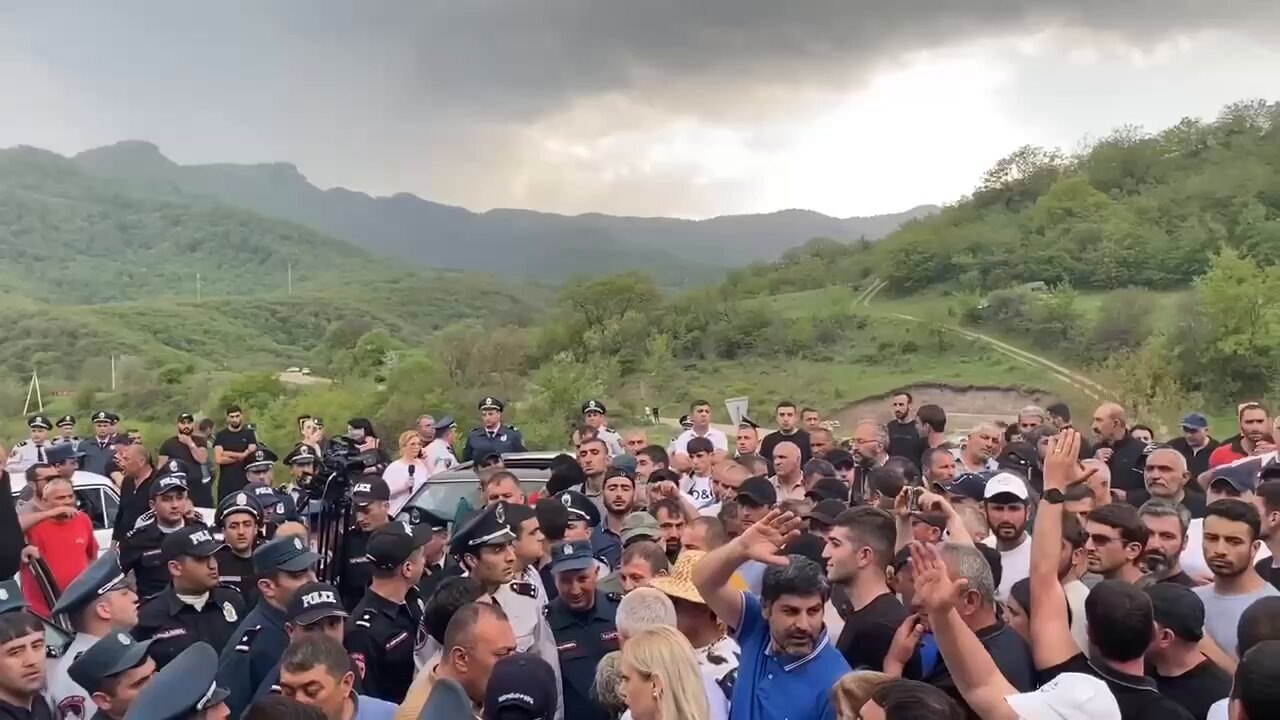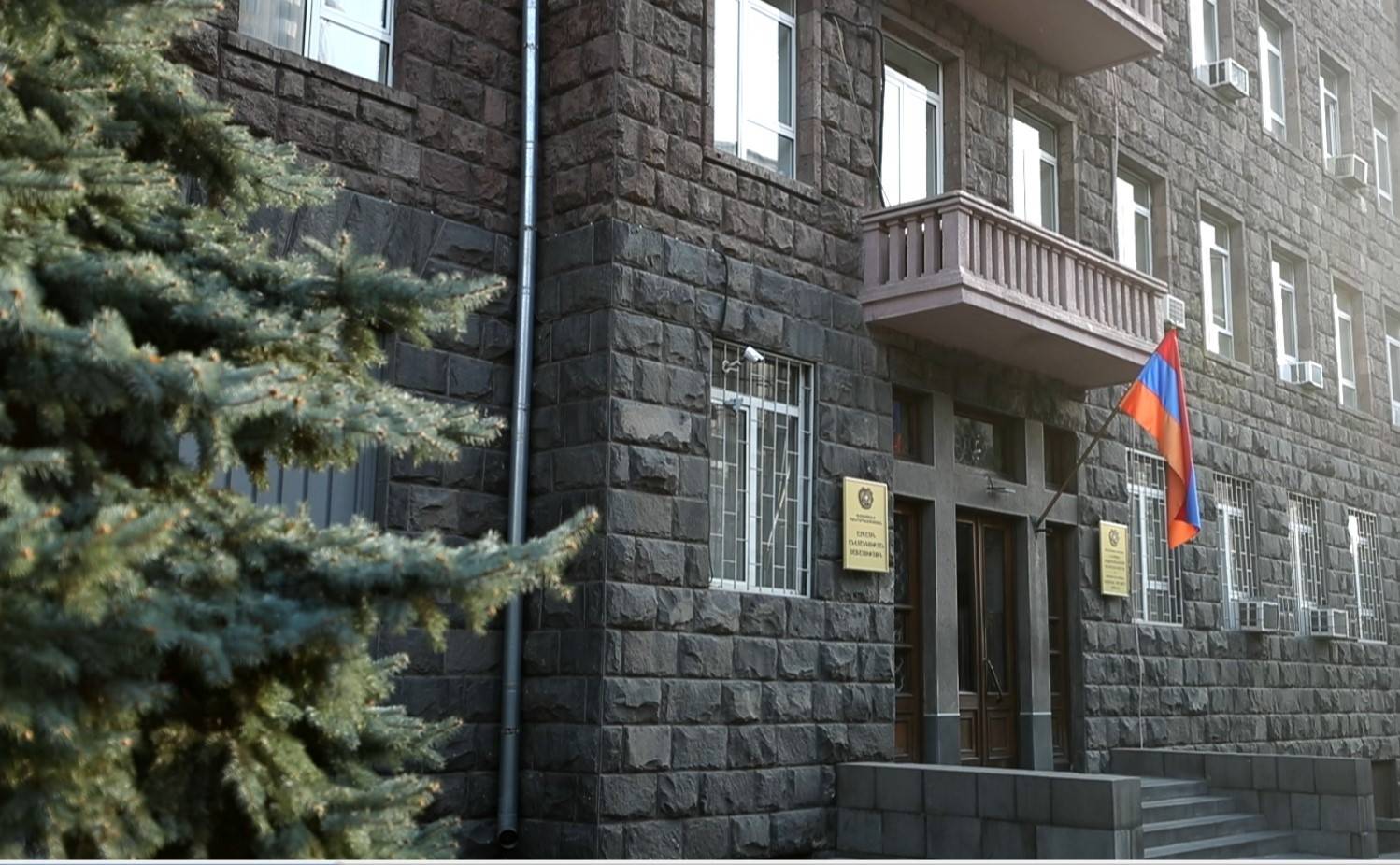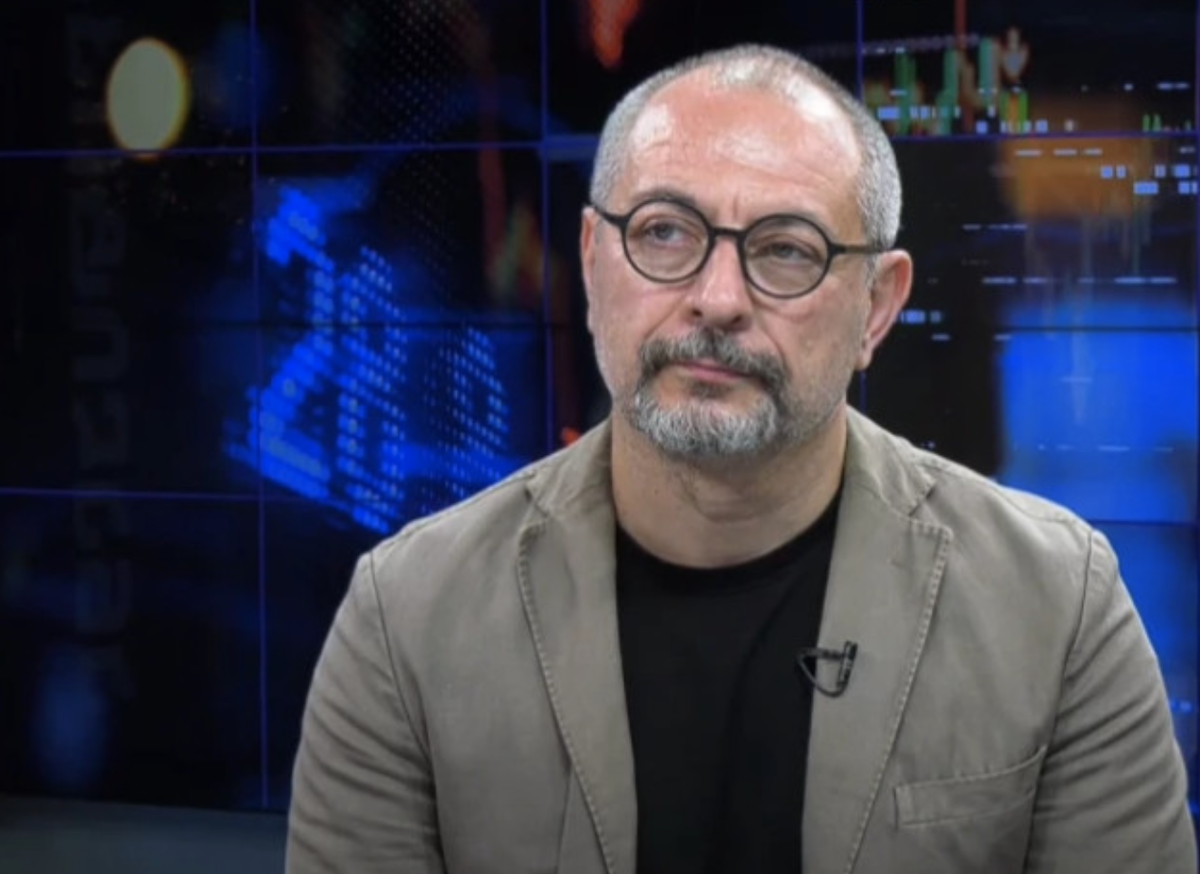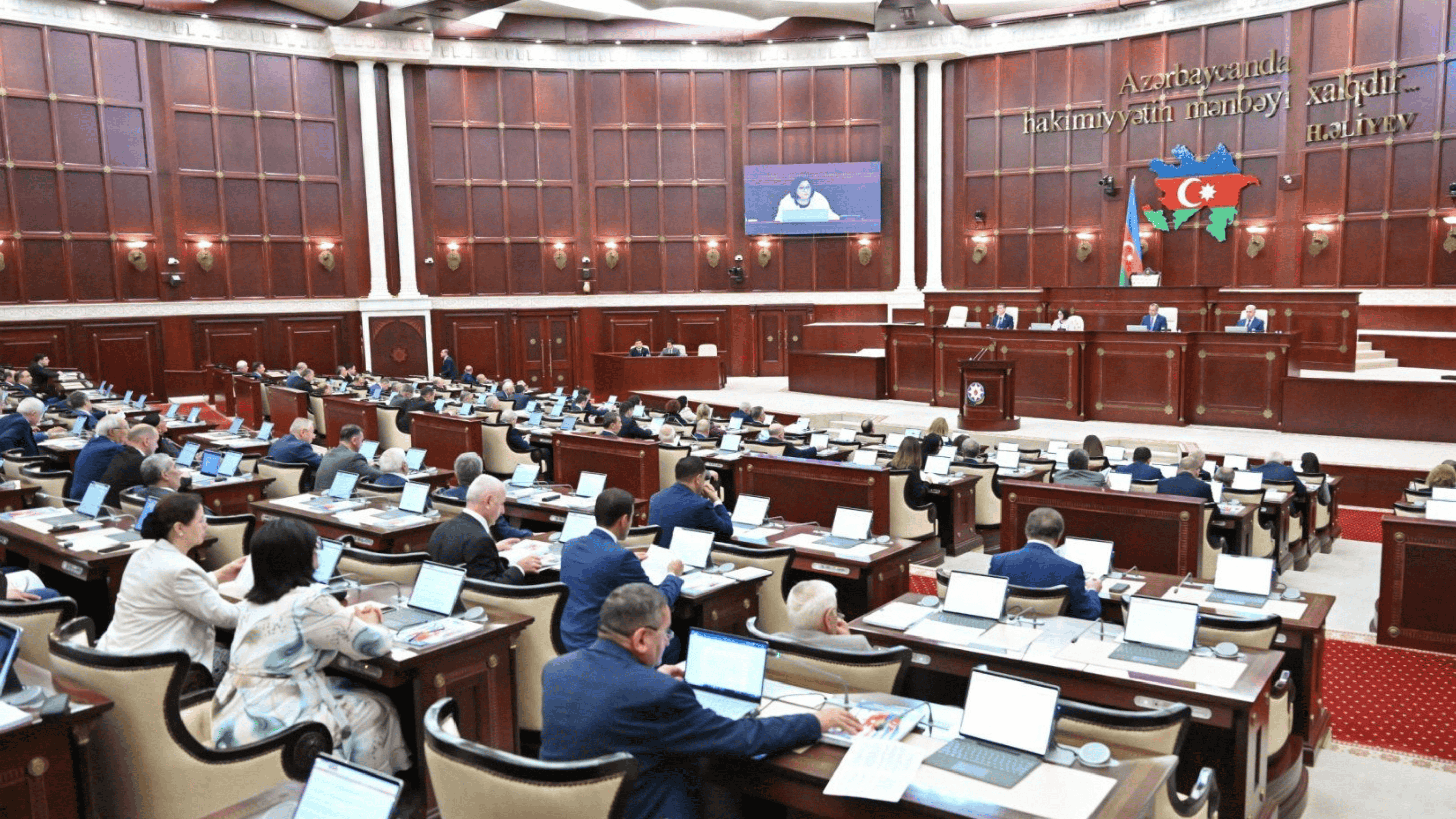"The border demarcation process with Azerbaijan is an adventure." Opinion from Yerevan
Armenia-Azerbaijan border demarcation
“Proceeding with the demarcation and delineation of the Armenian–Azerbaijani border before the signing of a foundational document [a peace agreement] and reference to specific maps is an adventure,” stated political analyst Gurgen Simonyan, commenting on the process, which has already begun in Armenia’s Tavush region.
“If there’s a Russian-Azerbaijani gambit in play in the region, then even papers won’t resolve anything. How can you agree to demarcation and delineation without having documents in hand? Where are the guarantees that Azerbaijan won’t attack [Armenian territory]?” he addressed the country’s authorities.
Meanwhile, the demarcation process is in full swing in the north of the country. Armenia’s leadership explains the necessity of these works due to security risks along the borders from Azerbaijan. However, the political analyst asserts that no sovereign state should make concessions due to fears of starting military actions. Concessions can only be justified by desperation. And Armenia, he says, is not in such a critical situation at the moment.
On April 19, the commissions of both countries reached a preliminary agreement on where the border with Azerbaijan should lie in northern Armenia, in the Tavush region. Yerevan and Baku agreed to bring this stretch of the border “in line with the legally justified inter-republican border that existed at the time of the dissolution of the USSR.”
Residents of Armenian villages such as Baghanis, Voskepar, Kirants, and Berkaber, affected by this decision, blocked the road to Georgia passing through these areas in protest. They view the commissions’ decision to return territory to Azerbaijan as a “unilateral concession.” People are concerned about how their safety will be ensured. However, demining and delineation work is already underway in this area. On April 23, prime minister Nikol Pashinyan announced that the “first border pillar” had been installed on the Tavush (Armenia) – Gazakh (Azerbaijan) section.
- “Armenia holds potential for drone manufacturing” – Military expert
- “Armenia provided with safety cushions” – Opinion on the Brussels meeting
- “We will not give up anything to anyone” – Pashinyan on protecting Armenian territories
Armenia’s prime minister “is guided by his hopes, and hope is not a political category,” says political analyst Gurgen Simonyan.
Before the start of the demarcation process, Pashinyan, speaking in parliament, asked himself questions – does the start of the demarcation process in Tavush ensure security, is a new attack on Armenia ruled out, is the return of vital territories of 31 villages, which are occupied by Azerbaijan, possible? And he answered that none of the mentioned points are guaranteed. However, refusing to conduct demarcation in this area contains “negative guarantees”:
• security threats will increase,
• there will be new attacks on Armenian sovereign territory,
• Azerbaijan will not return vital territory to the villages.
Therefore, these “negative guarantees” must be neutralized by demarcation in this area. It is this statement by the prime minister that Armenia’s expert community interpreted as a “declaration of hope.”
Meanwhile, Gurgen Simonyan believes that the head of state should be guided not by hopes, but by “information backed by indisputable guarantees.”
“Armenia and Azerbaijan should have been negotiating not about demarcation and delineation, but about a peace agreement,” Simonyan said on a local television channel.
He believes that first, Armenia and Azerbaijan should sign a peace agreement, which should include the following five points:
- non-use of force,
- commitment of Armenia and Azerbaijan to establish peace in the region,
- preparation of societies of both countries for peace,
- withdrawal of armed forces along the entire state border and contact line, deployment of border troops in these areas,
- a strategic map, according to which demarcation and delineation work will begin.
The expert draws attention to the fact that the demarcation commissions did not agree on any specific map for determining the border, only referring to the Alma-Ata Declaration:
“The Alma-Ata Declaration does not specify any map. It only talks about recognizing the borders of the former USSR republics, according to the realities of 1991. What were the realities on the contact line between Armenia and Azerbaijan, were there enclaves?“
Simonyan also says that Baku’s agreement to recognize Armenia’s borders according to the Alma-Ata Declaration is a “product of the imagination” of the prime minister. To confirm his thought, the political analyst reminds of one of the provisions of the demarcation commission’s decision.
It states that the parties agreed to be guided in the demarcation process by the Alma-Ata Declaration of 1991. However, in the future, if the peace agreement provides for different regulations, the provisions of the currently adopted decision will be subordinate to the principles laid down in the peace agreement.
The political analyst is convinced that first, a specific map should have been determined for the process, diplomatic representations should have been opened, bilateral relations should have been established, and only then should the demarcation and delineation of the border begin. What is happening now is the “destruction of the frontline on the ground,” the “breakthrough of the front line,” says the political analyst:
“No one, including Pashinyan, has given guarantees that after demarcation and delineation, Azerbaijan will leave the territories of Armenia captured by it, for example, in May and November 2021, September 2022.”
“Pashinyan is simply mistaken if he thinks that by agreeing on something, he can make Azerbaijan leave Sotk and Jermuk [settlements in Armenia, where Azerbaijani armed forces have advanced]. Only the Armenian army can do this, but we do not see any rational and logical plan for reforms in the army. And the positions fortified for 30 years in Tavush will be destroyed not by military force, but by Pashinyan’s signature,” he said.
According to Simonyan, the liquidation of Armenian statehood, as he puts it, was Baku’s “maximum plan”:
“Now they’ve come to terms with Armenia existing, but they want to ensure that the country ends up in a wheelchair, on a hospital bed, and they’d feed it through an IV.“
Commenting on the approving responses from various countries regarding the decision reached by Armenia and Azerbaijan, he noted:
“Foreign partners would welcome any process agreed upon by both sides, regardless of whether it may have catastrophic consequences for one of them.”
In the current situation, Simonyan sees only one way out: to halt the current process, and parliament should not ratify any document.
As Gurgen Simonyan stated, the four non-enclave villages adjacent to Armenia’s Tavush region (Baganis Ayrum, Ashagy Askipara, Heyrimli, and Qizilhajili) “are not Azerbaijani, it’s disputed territory.” Therefore, Azerbaijan did not have legitimate rights and could not initiate military actions in this direction:
“These villages would be considered Azerbaijani if there was a known map indicating they are part of Azerbaijan’s territory. For example, if it was announced that demarcation is based on the 1975 map.”
The analyst warns that the agreement on border demarcation between Yerevan and Baku does not reduce but increases risks. He emphasizes that without signing a peace agreement, Armenia’s defensive line is being destroyed.



















